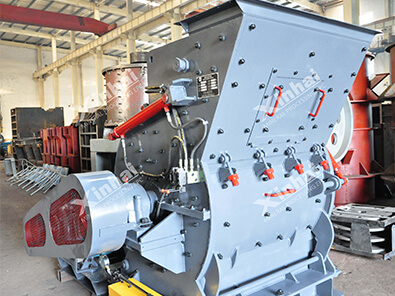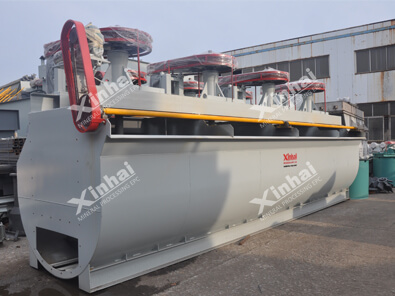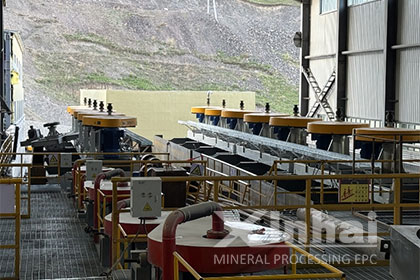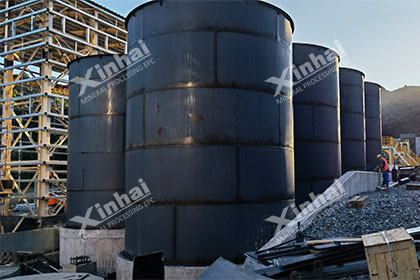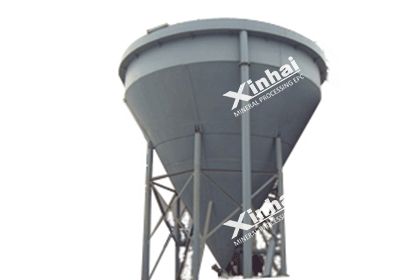The Comprehensive Guide to Mica Beneficiation Process
 Laura
Laura
 Apr 27, 2023
Apr 27, 2023
 1681
1681
If you want to know more details about equipment, solutions, etc, please click the button below for free consultation, or leave your requirements!
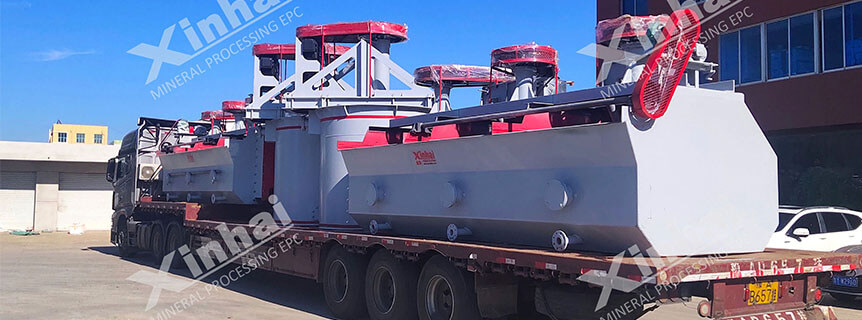
( Flotation machines are transported to mica processing plant )
Mica is a naturally occurring mineral that has various industrial applications. It is used in the manufacturing of electrical insulators, capacitors, and electronic components. Mica is also used in the cosmetics, paint, and plastics industries. However, the quality of mica ore is often poor, and it needs to be beneficiated to improve its quality and value. In this article, we will introduce the beneficiation process of mica. Let's start!
01What is Mica Beneficiation?
Back1)Definition of mica beneficiation
Mica is a naturally occurring mineral that is widely used in various industries due to its unique physical and chemical properties. However, the raw form of mica is not suitable for use in many applications and needs to be processed to improve its quality and purity. This process is known as mica beneficiation.
Mica beneficiation involves a series of steps to remove impurities and enhance the quality of the mineral. The process typically includes crushing, grinding, screening, and washing the raw mica to remove any unwanted materials such as rocks, dirt, and other minerals. After the initial processing, the mica is further refined through methods such as froth flotation, gravity separation, and magnetic separation to separate the mica from other minerals and improve its purity.
2)Benefits of Mica Beneficiation
The benefits of mica beneficiation are numerous. By removing impurities, the final product is of higher quality and can be used in a wider range of applications. Additionally, the process of beneficiation can make the mica more easily proc
02Mica Beneficiation Process
Back1)Crushing and Grinding Process in Mica Beneficiation
a)Crushing Process
The first step in mica beneficiation is the crushing process. Mica ore is crushed in a jaw crusher, and screened to separate the particles. The crushed material is then sent to a grinding mill for further processing.
b)Grinding Process
The grinding process is the second step in mica beneficiation. The crushed mica particles are ground in a ball mill to produce a fine powder that is suitable for use in various industries. The grinding process is essential to ensure that the mica particles are of consistent size and shape.
c)Grinding Mills
There are several types of grinding mills that are used in mica beneficiation, including ball mills, rod mills, and autogenous mills. Each type of mill has its own advantages and disadvantages, and the choice of mill will depend on the specific requirements of the application.
Ball Mills
Ball mills are the most commonly used type of mill in mica beneficiation. They are simple in design, easy to operate, and can produce a fine powder in a short amount of time. However, they are not suitable for processing large amounts of material.
Rod Mills
Rod mills are similar to ball mills, but use long rods instead of balls to grind the material. They are more efficient than ball mills, but are not as commonly used in mica beneficiation.
Autogenous Mills
Autogenous mills are a type of mill that uses the material itself to grind the particles. They are highly efficient, but are not suitable for processing hard materials.
d)Conclusion
The crushing and grinding process is an important step in mica beneficiation. It is essential to choose the right type of mill for the specific application, to ensure that the mica particles are of consistent size and shape.
2)Washing and Screening Process in Mica Beneficiation
The washing process involves removing impurities such as clay, dirt, and other minerals from the mica ore. This is done by using water and various mechanical methods such as scrubbing, washing, and flotation. The washing process is essential in producing a high-quality mica product that meets industry standards.
After the washing process, the mica ore is subjected to a screening process. This involves separating the mica particles based on their size. The screening process is done using various types of screens such as vibrating screens, trommel screens, and inclined screens. The screening process ensures that the mica product is of a uniform size and free from any impurities.
The washing and screening process is critical in mica beneficiation as it determines the quality and purity of the final product. The process ensures that the mica product meets the required industry standards and is suitable for various applications. The washing and screening process also helps to reduce the environmental impact of mica mining by minimizing the amount of waste generated.
In conclusion, the washing and screening process is an essential step in mica beneficiation. It helps to remove impurities and ensure that the final product is of high quality and meets industry standards. The process also helps to reduce the environmental impact of mica mining. Therefore, it is important to ensure that the washing and screening process is carried out effectively to obtain a high-quality mica product.
3) Gravity Separation Process in Mica Beneficiation
a) Gravity Separation Process
Gravity separation is one of the most commonly used methods for mica beneficiation. This process involves the use of gravity force to separate the valuable mineral from the gangue minerals. The principle behind this process is that different minerals have different densities, and hence, they can be separated based on their specific gravity.
The gravity separation process involves several steps, including crushing, grinding, and classification. The mica ore is first crushed and ground to a size that is suitable for separation. The crushed ore is then classified into different size fractions using screens and cyclones.
The next step involves the use of gravity separation machines, such as shaking tables, spirals, and jigs. These machines use the principle of gravity force to separate the mica from the gangue minerals. The mica-rich fraction is collected and further processed to remove any remaining impurities.
b) Gravity Separation Machines
Shaking tables are one of the most commonly used machines for gravity separation of mica. These machines consist of a table that is oscillated horizontally and vertically. The mica ore is fed onto the table, and the shaking motion causes the mica to move towards the concentrate end of the table, while the gangue minerals move towards the tailings end.
Spirals and jigs are also used for gravity separation of mica. Spirals are used to separate the heavy minerals from the lighter ones, while jigs are used to separate the denser minerals from the less dense ones.
c)Conclusion
Gravity separation is an effective method for mica beneficiation. This process is simple, cost-effective, and environmentally friendly. The use of gravity separation machines, such as shaking tables, spirals, and jigs, can enhance the quality of mica and make it suitable for various industrial applications.
4)Flotation Process in Mica Beneficiation
Flotation process involves the use of chemicals to separate the valuable minerals from the unwanted materials. In the case of mica, the process involves adding a collector agent to the ore slurry, which attaches to the mica particles and makes them hydrophobic. The hydrophobic particles then attach to the air bubbles introduced into the slurry, and rise to the surface, forming a froth layer. The froth is then skimmed off, and the mica concentrate is collected.
The flotation process is highly effective in separating mica from other minerals, as mica has a unique surface chemistry that makes it easy to separate from other minerals. Additionally, the process is relatively simple and can be easily scaled up for commercial production.
However, the flotation process also has its limitations. The process is highly sensitive to the pH of the slurry, and any changes in pH can affect the efficiency of the process. Additionally, the process is not effective in separating mica from clay minerals, which can reduce the quality of the mica concentrate.
Despite its limitations, the flotation process remains the most commonly used method for mica beneficiation. Advances in technology and research continue to improve the efficiency and effectiveness of the process, making it a valuable tool for the mica industry.
In conclusion, the flotation process is a key process in mica beneficiation. It is a highly effective method for separating mica from other minerals and is relatively simple to scale up for commercial production. While the process has its limitations, ongoing research and technological advancements continue to make it a valuable tool for the mica industry.
5)Magnetic Separation Process in Mica Beneficiation
Magnetic separation is a process that uses magnetic force to separate magnetic materials from non-magnetic ones. In mica beneficiation, magnetic separation can be used to remove iron and other magnetic impurities from the ore. The process involves passing the mica ore through a magnetic separator, which attracts the magnetic particles and separates them from the non-magnetic ones.
The magnetic separation process in mica beneficiation has several advantages. Firstly, it is a simple and efficient method that can be used to remove impurities from large quantities of mica ore. Secondly, it is a non-destructive method that does not require any chemicals or harmful substances, making it environmentally friendly. Finally, it is a low-cost method that is suitable for use in small-scale mining operations.
However, there are also some limitations to the magnetic separation process in mica beneficiation. Firstly, the process is only effective for removing magnetic impurities, and cannot remove non-magnetic impurities such as quartz and feldspar. Secondly, the process requires a high magnetic field strength, which can be expensive to generate. Finally, the process may not be suitable for all types of mica ore, and may require additional beneficiation methods to achieve the desired quality.
In conclusion, the magnetic separation process is an effective method for mica beneficiation that can remove magnetic impurities and improve the quality of the ore. However, it is important to consider the limitations of the process and to use it in conjunction with other beneficiation methods if necessary. With proper use and understanding, magnetic separation can play an important role in the production of high-quality mica products.
03To Sum Up
BackThe mica beneficiation process is a complex and multi-stage process that involves several stages such as crushing, grinding, washing, and flotation. This process helps to remove impurities and improve the quality of the mica, making it suitable for use in various industries. By understanding the mica beneficiation process, manufacturers can produce high-quality mica products that meet the needs of their customers.
 +86 183 3575 8886
+86 183 3575 8886 pinklaurabao@gmail.com
pinklaurabao@gmail.com




 Message
Message Chat Now
Chat Now


